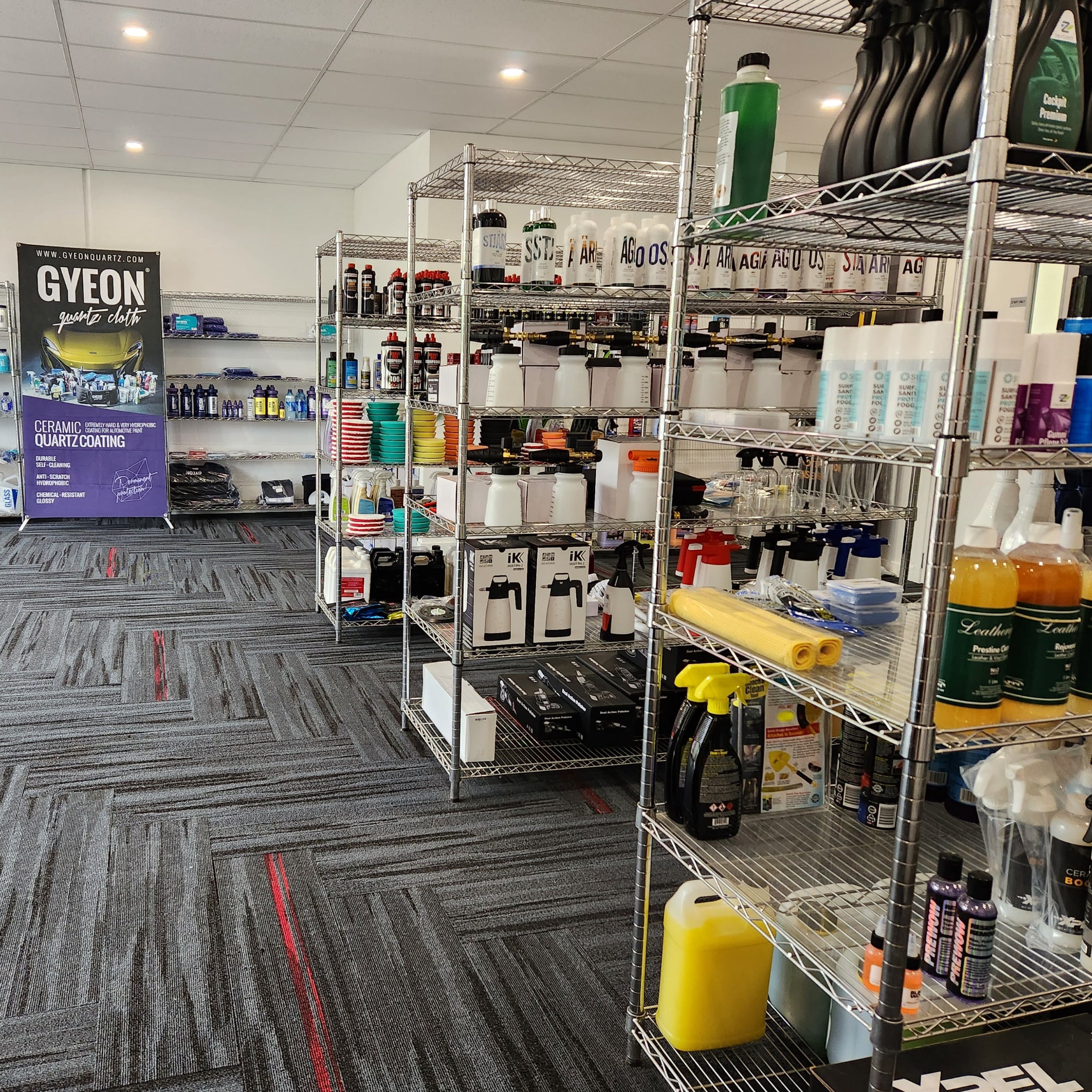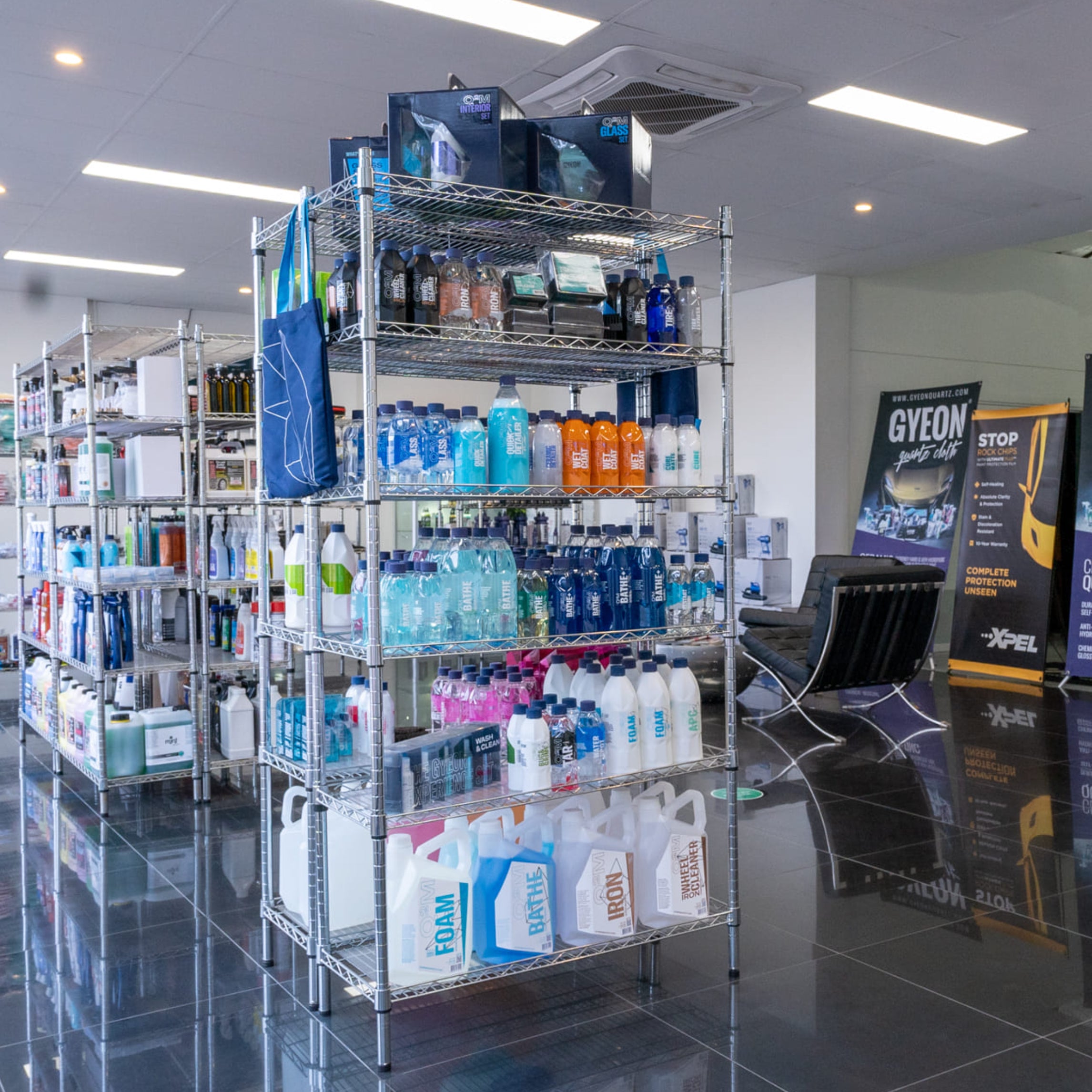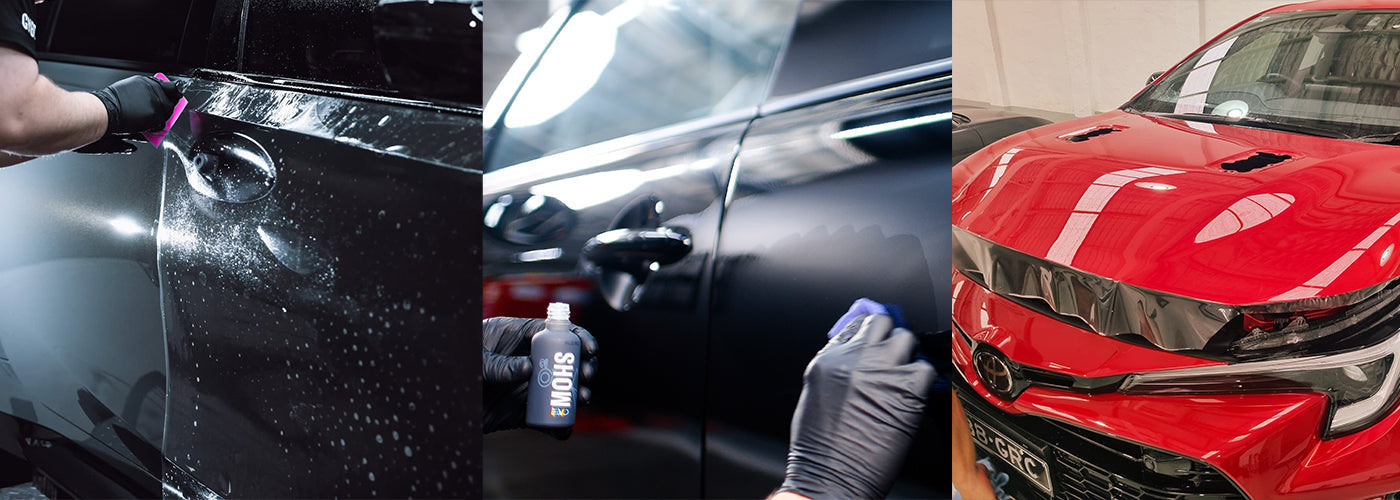After checking out our Pros and Cons list, you’ve decided to make the investment into protecting your car with Paint Protection Film (PPF). This transparent shield takes the brunt of stones, bug splatter, road grime, and all the other junk the road throws at your paint. But PPF isn’t some invincible force field you can forget about. Like any premium product on your car, it needs the right care to stay clear, glossy and performing at its best.

Neglect it, and your film can dull, stain or lose that slick self-healing finish that makes it such a clever product. The good news? Looking after PPF isn’t complicated. It just takes a little know-how and a consistent routine.
In this guide, you’ll learn how to care for your PPF from day one, which products to use (and which to avoid), the best wash techniques, and why calling in a professional detailer now and then is one of the smartest moves you can make.
The First 7 Days: Immediate Post-Installation Care
Similar to a Ceramic Coating, freshly installed PPF needs a Curing period to bind to the surface of your car properly. Think of it like fresh paint drying: give it time to lock down properly, and you'll avoid problems like peeling or compromised integrity later. For the first week after installation:
- Keep it clean. Ideally, keep your car in a sheltered location during the curing process to help avoid anything that might scratch the surface before it has had a chance to properly cure. If dust lands on the car, gently sweep it away with a soft microfibre duster. You don’t need to avoid water during this period like you would with a ceramic coating, however, the edges of the film can be a point of vulnerability during the curing process.
- No pressure washing. Pressure washers and aggressive brushing/rubbing while cleaning the surface can disrupt the adhesive, especially around the edges of the film, while it’s bonding to your paint, possibly impacting the long-term lifespan of the protective film.

What if you see bubbles or hazing? Don’t immediately panic; this is normal as moisture evaporates during curing. Most of these marks disappear within a week or two. If they linger, give your installer a call for a quick check-up. Handling this first week correctly will keep your paintwork protection intact, setting your film up for years of flawless protection against UV rays and environmental elements.
The Foundation of PPF Care: The Proper Wash
If you take just one thing away from this article, make it this: your wash routine will make or break the life of your PPF. Treating it like regular paint is the fastest way to ruin it.
Why PPF-Specific Shampoos Are Worth It
Ordinary car shampoos are designed for clear coat, not protective film. Yes, a good pH-neutral shampoo is better than household soap, but it won’t be ideal on PPF's unique surface. PPF-specific shampoos (like GYEON Q²M PPF Wash) are designed to clean deeply while staying gentle on the film’s top coat. They help preserve clarity, prevent yellowing, and maintain that crisp water-beading effect.

Adding a Layer of Slickness
After washing, giving your PPF a light top-up of protection keeps it feeling like new. Products such as GYEON Q²M PPF Maintain boost slickness and add a hydrophobic layer that resists bug splatter, tar, and grime. This modern approach to sealing behaves more like a thin ceramic coating, making each wash faster and safer. When maintaining your PPF and paint protection, using pH-neutral soaps is essential to ensure there are no residues left that could affect the effectiveness of the protective layer.

For even greater protection against environmental hazards, you can apply a layer of Ceramic Coating to your PPF to give it that extra protective and hydrophobic boost! While there are dedicated PPF coatings, such as GYEON PPF EVO, which are specifically designed to bond to PPF, most high-quality ceramic coatings, including graphene coatings, will work as well. However, always check with the manufacturer before applying to make sure the coating is safe and compatible.
Technique Still Rules
We’ve covered it a million times, but even with premium protective products, sloppy washing will ruin your film, so let’s cover the best option for giving your PPF a proper clean: the two-bucket method:
- Bucket one: Your soapy wash water.
- Bucket two: Clean rinse water with a grit guard to trap debris.
Rinse your microfiber wash mitt after each panel so you’re not dragging grit across the film. If you’ve got a foam cannon, use it. Pre-soaking the car in foam softens dirt so it slides away before you even touch the surface; less contact means fewer swirls. To dry, use a plush microfiber towel or a dedicated car blower, as microfiber towels can effectively prevent water spots and scratches.
 And whatever you do, avoid automatic car washes. Their brushes will scuff and weaken your film in no time, while even “touchless” drive-through washes rely on harsh chemicals that can degrade PPF. Hand washing with the right technique is the safest route to maintain the effectiveness of your paintwork protection.
And whatever you do, avoid automatic car washes. Their brushes will scuff and weaken your film in no time, while even “touchless” drive-through washes rely on harsh chemicals that can degrade PPF. Hand washing with the right technique is the safest route to maintain the effectiveness of your paintwork protection.
What to Use and What to Avoid on Your PPF
PPF is durable but not bulletproof. The wrong products can yellow the film, dull its gloss or damage its self-healing top coat.
Products You Should Use
- PPF-safe sealants or waxes. Look for formulas designed for film or at least ones that are solvent-free. They keep the surface slick, protect the top coat, and boost hydrophobic behaviour so dirt, mud, and water don’t stick. Using these products as part of proper installation aftercare can notably enhance the longevity of your paint protection film by shielding it from environmental elements like UV rays.
- Quick detailer sprays. Perfect for spot-cleaning bird droppings, bug splatter, or tree sap before they etch into the surface. Keep one in your boot; quick action can save your film from permanent marks. Use a soft microfibre to wipe without scratching. Regular use of appropriate products and techniques can ensure your PPF effectively protects your vehicle's paintwork for an extended period.
Products to Avoid
- Harsh solvents or petroleum-based cleaners. Bug and tar removers loaded with strong chemicals, heavy IPA wipes, or degreasers will attack the film, causing discolouration or cracking. Using these products can compromise the integrity of your paint protection film (PPF) by leading to peeling or staining issues.
- Abrasive polishes or compounds. PPF doesn’t need polishing. These products will mar the film and ruin its clarity by leaving behind residue that can impact the PPF's performance against external hazards.
- Household soaps or cleaners. Too alkaline, too aggressive, and guaranteed to strip protective layers, these can also reduce compatibility with other PPF care treatments, thus threatening its durability against environmental factors like UV rays and sunlight water exposure.
Dealing with Damage
Minor Repairs
As mentioned above, PPF isn’t immune to wear and tear, which can eventually lead to issues like peeling if not addressed properly. One of the clever features of modern PPF is its self-healing property. Light scratches and swirls often vanish when the film is warmed, meaning light marring can be removed by simply:
- Parking your car in sunlight, allowing the warmth to ensure the film’s compatibility with its self-healing properties.
- Pouring warm (not boiling) water over the affected area for effective dirt removal, or
- Using a heat gun carefully at a low temperature to preserve the film's effectiveness.
Always check with the installer before attempting the above solutions to make sure you don’t do more harm than good, protecting the installation's integrity.
For smaller scratches, dulling or and particularly for water spots and mineral build-up that the above can’t deal with, using light PPF compounds like GYEON Q²M PPF Renew becomes your best option. Most installers and manufacturers will tell you you cannot polish PPF, and while this is true, using a DA Polisher and a PPF-focused compound can bring your film back to life without any aggressive cutting that can damage the film.
So, what’s special about products like PPF Renew? First off, it’s not a polish compound; it’s a micro-finish blend with gentle abrasive particles designed specifically for PPF’s delicate top layer. These fine abrasives lift away bonded grime and revive gloss, all while preserving the film’s protective makeup. On top of that, it’s SiO₂-infused, so you get a slick, glossy feel, fantastic UV resistance, and boosted chemical protection in one shot, which enhances overall PPF care.
When to Call a Pro
The above may be able to cover most lighter issues, but there will be some issues that are best dealt with professionally. Outside of its self-healing properties, one of the best features of PPF is that it is easily replaceable. Instead of having to go through a full respray and/or paint correction, you can have the affected panels' PPF replaced to look like new.
Regular visits to a professional detailer are also great for regular checkups and maintenance, as they will have all of the insights needed to effectively maintain areas of your PPF that even the most experienced home detailer can miss.
Conclusion: Consistency Is Key
PPF is one of the smartest upgrades you can make to protect your car’s paint, but it only performs as well as you maintain it.
Wash it properly with the two-bucket method and PPF-safe shampoos. Add a protective top-up to keep it slick and hydrophobic. Stay away from harsh products and avoid automatic washes entirely. And when you want a thorough clean or long-term protection, let a professional detailer handle it.
Look after your PPF and it will return the favour, keeping your car glossier, cleaner and better protected for years to come.





